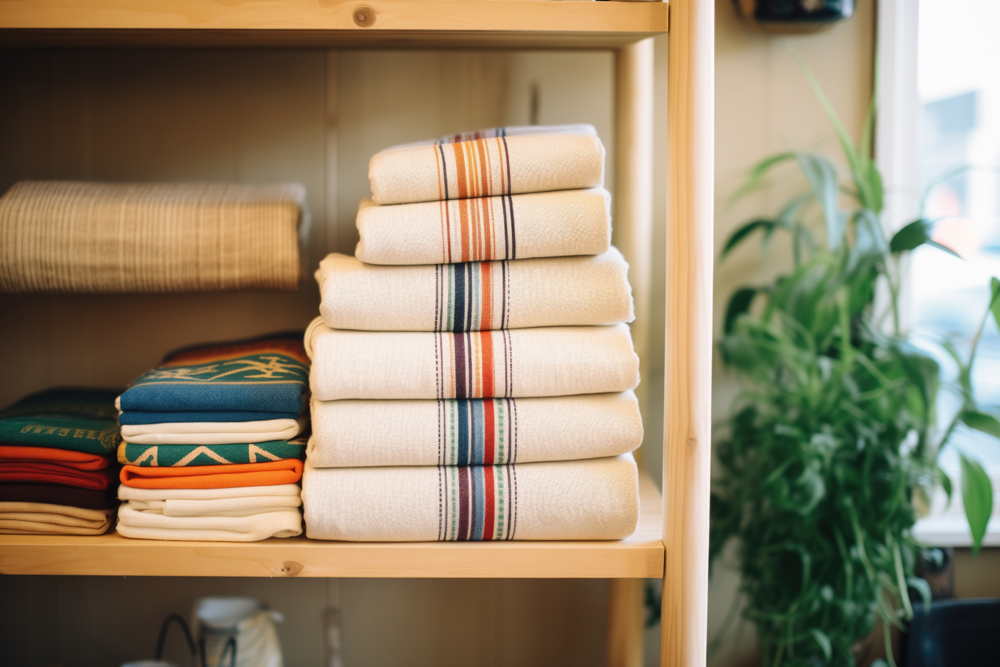Handloom dhotis are more than just garments; they’re a legacy of artistry, cultural pride, and sustainable fashion. If it’s made from soft cotton or rich silk, a handloom dhoti deserves proper care to preserve its elegance and longevity. Unlike machine-made textiles, handwoven fabrics require a little extra attention to maintain their texture, colour, and weave.
Here, we’ll see the best ways to wash, store, and preserve your handloom dhoti, so it continues to look and feel beautiful for many years.
Why Handloom Needs Special Care
Handloom fabrics are delicately woven, often using natural fibres and traditional techniques. This makes them breathable and eco-friendly, but also more sensitive to harsh chemicals, rough handling, and improper storage. Treating your dhoti with care not only protects the fabric but also honours the skilled crafters behind its creation.
1. Washing Your Handloom Dhoti
First Wash, Be Gentle
If it’s a brand-new dhoti, avoid machine washing immediately. Most handloom dhotis, especially coloured or printed ones, may bleed during the first wash.
What to Do:
- Soak it in cold water with a handful of salt for 15–20 minutes. This helps set the colour.
- Rinse gently by hand with plain water, no detergent yet.
Regular Washing Tips
- Hand-wash in cold or lukewarm water using a mild detergent or soap nut solution.
- Avoid using strong detergents, fabric softeners, or bleach.
- Do not rub or wring the fabric. Instead, gently swirl and rinse.
- If you must use a washing machine, choose the gentle or delicate cycle and put the dhoti inside a mesh laundry bag.
Drying the Right Way
- Never dry under direct sunlight as it can fade colours.
- Dry in shade on a flat surface or use a clothesline, but avoid stretching.
- Do not tumble dry.
2. Ironing and Folding
Ironing Tips
- Iron while the dhoti is slightly moist for best results.
- Use a low to medium heat setting for cotton dhotis and a low heat for silk.
- Place a thin cloth or cotton towel over the dhoti while ironing to protect the fabric.
Folding Carefully
- Always fold along the natural creases or pleats.
- Avoid sharp or tight folds as they can weaken the fabric over time.
- For silk dhotis, consider rolling instead of folding to avoid permanent creases.
3. Storing Your Handloom Dhoti
Choose the Right Place
- Store in a cool, dry place, away from direct sunlight or moisture.
- Avoid plastic bags; they can trap humidity and cause mildew.
- Use cotton or muslin cloth bags for storage, which allow air circulation.
Avoid Pests
- Add natural repellents like neem leaves, cloves, or lavender sachets to keep moths away.
- Make sure the dhoti is completely dry before storing to prevent mould growth.
Rotate Usage
- Don’t leave your dhoti folded in the same way for too long.
- Refold or air it out every few months to maintain fabric freshness and avoid permanent creases.
4. Long-Term Preservation Tips
- For special occasion dhotis (like silk or embroidered), consider wrapping in acid-free tissue paper and storing in a box.
- Avoid hanging dhotis for long periods, as this may distort the shape or stretch the fabric.
- If storing for seasonal use, label and layer with other similar clothing to avoid heavy weight on a single piece.
Bonus Tip: Spot Cleaning
If it’s a food stain or a splash of oil. Instead of washing the entire dhoti, you can:
- Dab gently with a cotton cloth dipped in mild soap solution.
- Avoid scrubbing. Instead, use a blotting motion.
- Rinse the spot with plain water and dry in the shade.
Caring for your handloom dhoti is not just about keeping it clean; it’s about respecting the artistry and effort woven into every thread. With the right washing, storage, and preservation methods, your dhoti can remain soft, vibrant, and stylish for many years.
So if it’s a simple cotton dhoti for daily routines or a grand silk one for a special occasion, give it the care it deserves.

